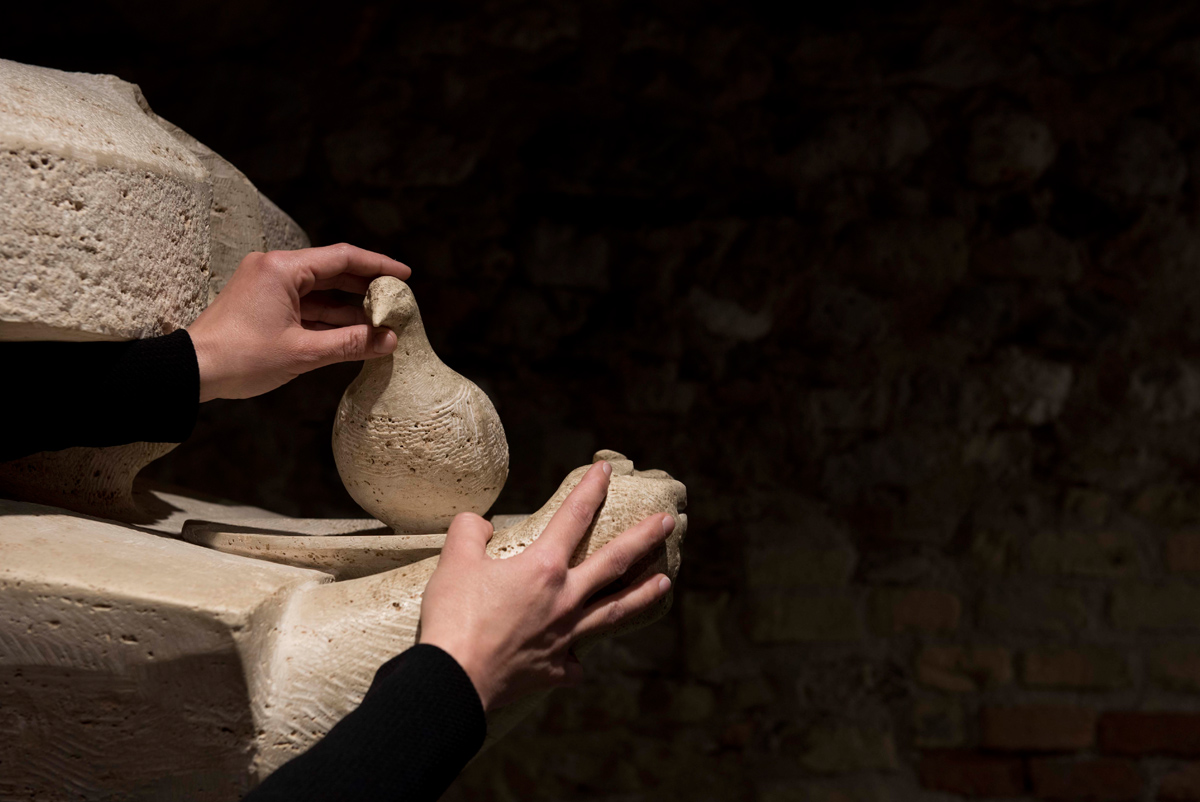The Museo Omero has been organizing and curating training courses since 2004. They provide an overview of the issues of disability and accessibility to cultural heritage.
Over the years, the museum has become specialized in training courses on accessibility to cultural heritage. It offers teachers, museum operators, educators and authorized tourist guides, a high-level training opportunity to learn about the technologies, tools and methods available as well as about national and international experience in the fields of accessibility to cultural heritage, accessible tourism and art education for blind, partially-sighted and deaf people.
Objectives
There are multiple objectives, including encouraging the scholastic and social integration of people with visual impairment. We provide staff in the relevant sectors with the knowledge and tools required to make museum heritage accessible and to promote a correct and meaningful education in art and aesthetics.
The objectives that the course students should achieve are also specific to these fields i.e. to learn about the methods, aids, technologies and best practice which can facilitate access to museum heritage; to learn about the possibilities, aids and methods for the artistic and aesthetic education of people with visual impairment; to discover the technologies and IT tools which can increase the autonomy and learning of those who are blind.
Modules
In 2013, the national training and refresher course was expanded to include a qualified and innovative contribution on the accessibility to culture of people with hearing disabilities.
The annual training course is made up of two modules, usually held on Thursday, Friday and Saturday. The Italian and international tutors are specialized in the fields of visual and hearing disability and accessibility to cultural heritage. They also provide a thorough overview of the issues relating to museum accessibility.
The first two days are dedicated to Module “Accessibility to museum heritage and the artistic and aesthetic education of people with visual impairment“, for a total of 15 hours, while the Saturday morning is dedicated to module “Cultural heritage and tourism: how to make them accessible to deaf people“, lasting 4 hours.
Speakers
Over the years many qualified speakers have been tutors in the courses. They include: Loretta Secchi of the Museo Tattile di Pittura antica e moderna Anteros dell’Istituto dei ciechi “F. Cavazza”, Bologna, Lucia Baracco, architect and manager of the Progetto Lettura Agevolata del Comune di Venezia, Paolo De Cecco and Nicoletta Marconi of the Lega del Filo d’Oro in Osimo, Nicoletta Grassi of the Centro Tiflodidattico in Pesaro, Aldo Grassini, Andrea Socrati and several specialized members of the Museo Omero staff. Michele Calascibetta, Patrizia De Socio and Rosanna Catozzo of the Ufficio Scolastico Regionale, Paolo Carini and Paolo Scarpellini, both Direttori Generali at the Direzione Regionale per i Beni Culturali e Paesaggio delle Marche, Mariagrazia Bellisario, Dirigente at the Direzione generale per il paesaggio, le belle arti, l’architettura e l’arte contemporanee – Servizio V architettura e arte contemporanee, MIBAC, Gianfranca Rainone of the Direzione Generale per la valorizzazione del patrimonio culturale – Coordinatore del Centro per i Servizi Educativi del Museo e del Territorio, MIBACT. Elisabetta Borgia of the Centro per i servizi educativi del museo e del territorio – Direzione Generale Educazione e Ricerca -Servizio I – Ufficio studi – MIBACT, Sandra Tucci of the Direzione Generale Arte e Architettura contemporanee e Periferie urbane – Servizio I – Arte e Architettura Contemporanee – MIBACT, Gabriella Cetorelli, head of the Servizio Progetti speciali – MIBACT, Fabrizio Vescovo architect and scientific coordinator at the Gruppo di lavoro Linee guida psico-sensoriali e cognitive del MiBACT, Rosella Bellesi architect at the Polo Museale delle Marche; Barbara Leporini (Researcher at the Istituto di Scienza e Tecnologie dell’Informazione del CNR, Pisa).
Some of the artists who have works in our collection have also given talks. They include Loreno Sguanci and Felice Tagliaferri.
In the field of hearing disabilities, there have been talks by Carlo di Biase, art historian and member of the Osservatorio sull’Accessibilità presso la sede centrale dell’Ente Nazionale Sordi, Consuelo Agnesi, architectect and member of the Osservatorio sull’Accessibilità (OSA) dell’Ente Nazionale Sordi, Diego Pieroni President of the Ente Nazionale Sordi and Maria Bucci, Italian Sign Languge interpreter at the Ente Nazionale Sordi of Ancona, Raffaela Tomassetti and Violante Nonno of Kiasso Tis – Turismo Internazionale per Sordi, Stefania Fadda, director of CABBS Onlus – Psychotherapist and psychologist specialized in Mental Health and Deafness, Valentina Bani, Italian Sign Language museum guide, Brunella Manzardo, researcher at the Progetto Accessibilità, Dipartimento Educazione at the Castello di Rivoli Museo d’Arte Contemporanea and Luciano Candela, teacher and trainer of the deaf at the Istituto dei Sordi, Torino.
International speakers who have taken part include Hoelle Corvest from the Cité des Sciences et de l’Industrie, Paris, Cyrille Gouyette of the Louvre, Zsofia Tettamanti of the Fine Arts Museum of Budapest, Marcus Weisen, the international consultant on the subject of Accessibility to Heritage, Jane Samuels, Access and Equality Manager at the British Museum, London, Antonio Espinosa Ruiz, Director of the Vilamuseu, of the Network of Museums and Monuments of Villajoyosa.
Information
For further information, please contact info@museoomero.it.

